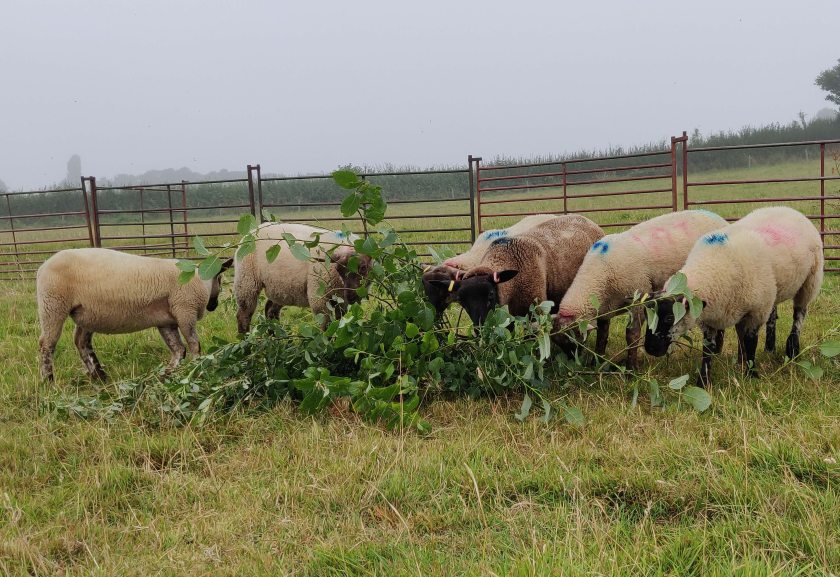
Introducing tree leaves to a sheep’s diet could play an important role in reducing harmful greenhouse gas emissions, new research suggests.
Scientists monitored four groups of six Aberfield x lambs, half of which were fed around 200g of goat willow leaves each per day.
When their urine patches were monitored, they found significant reductions in both nitrous oxide and carbon dioxide in those groups which fed on willow leaves.
The work by the Game & Wildlife Conservation Trust (GWCT) also found lower emissions of ammonia from urine patches where lambs were fed willow.
While cutting branches to feed to livestock is labour intensive, a move towards agroforestry would allow the direct browsing of coppiced trees if livestock access is managed to ensure sustainability, scientists say.
Professor Chris Stoate, undertook the research, said: “This study is a novel application of the specialist expertise and equipment we have at the Allerton Project and builds on our recent research on grass and livestock systems.
"The results are preliminary, but they provide an exciting indication that feeding willow leaves to ruminants may contribute to national targets for both climate change and air quality.”
The results also suggest that a supplementary benefit of incorporating willow into grazing ruminant systems may be a contribution to climate change mitigation, as well as air quality improvement.
The Committee on Climate Change estimates that agroforestry could result in carbon emissions savings of 5.9 MtCO2e per year by 2050, approximately 13% of the total current emissions from the agriculture sector.
